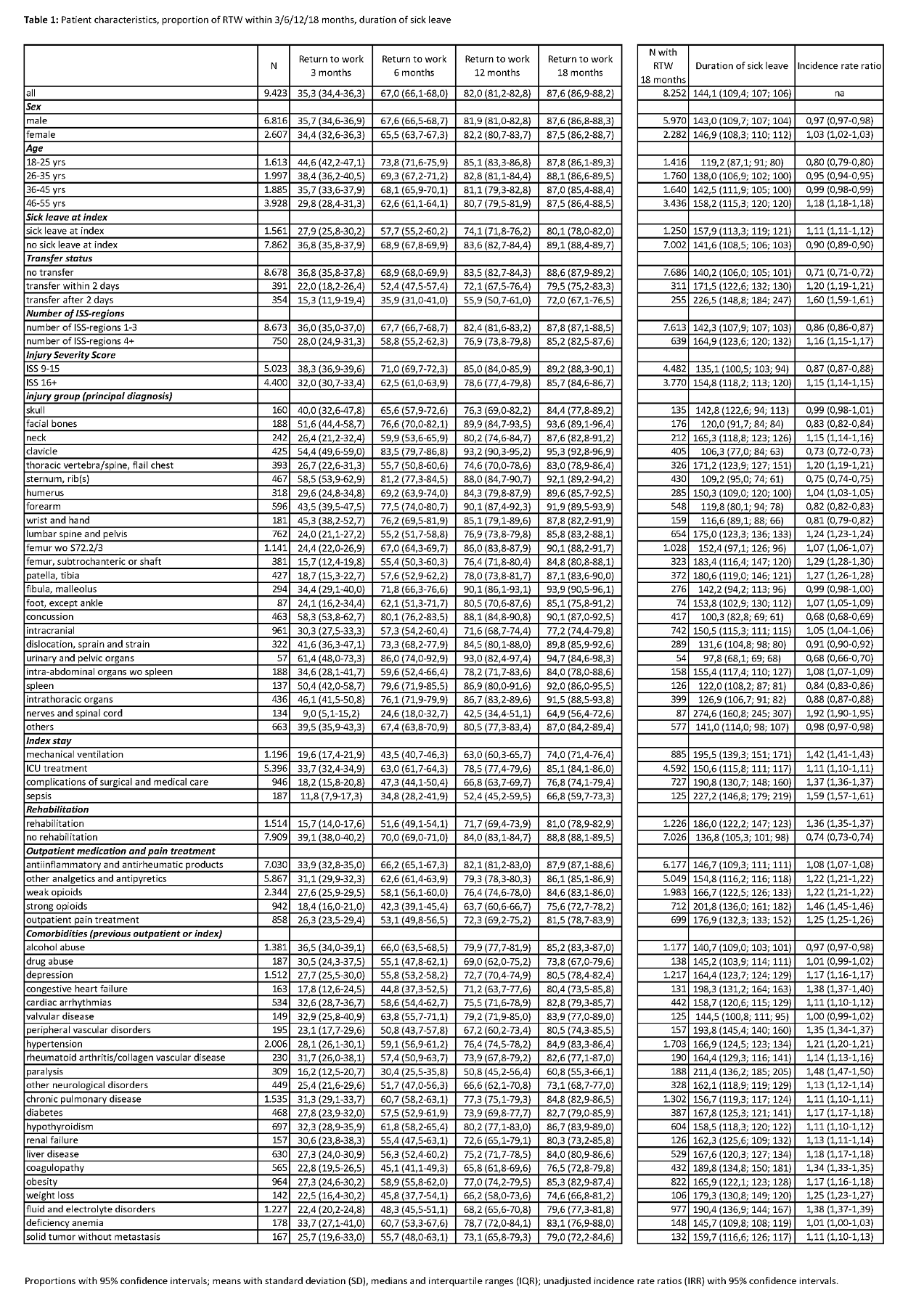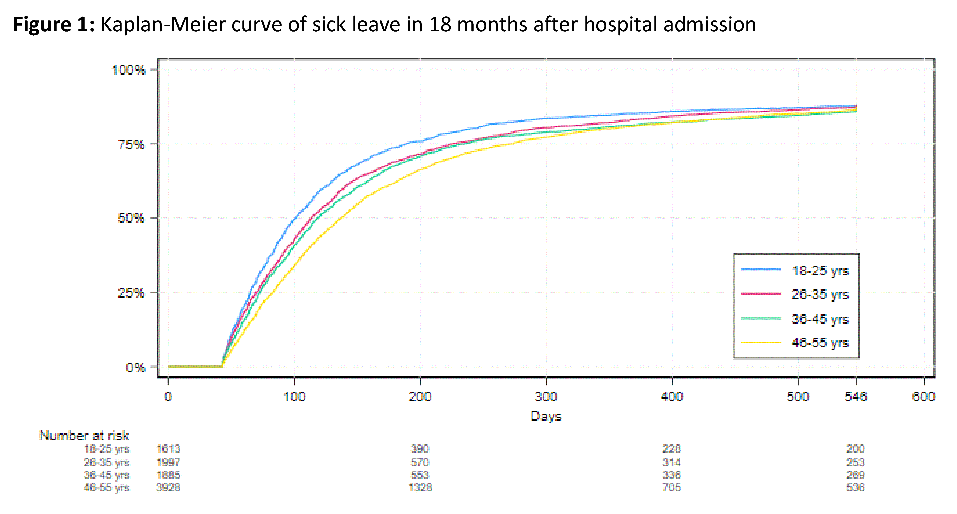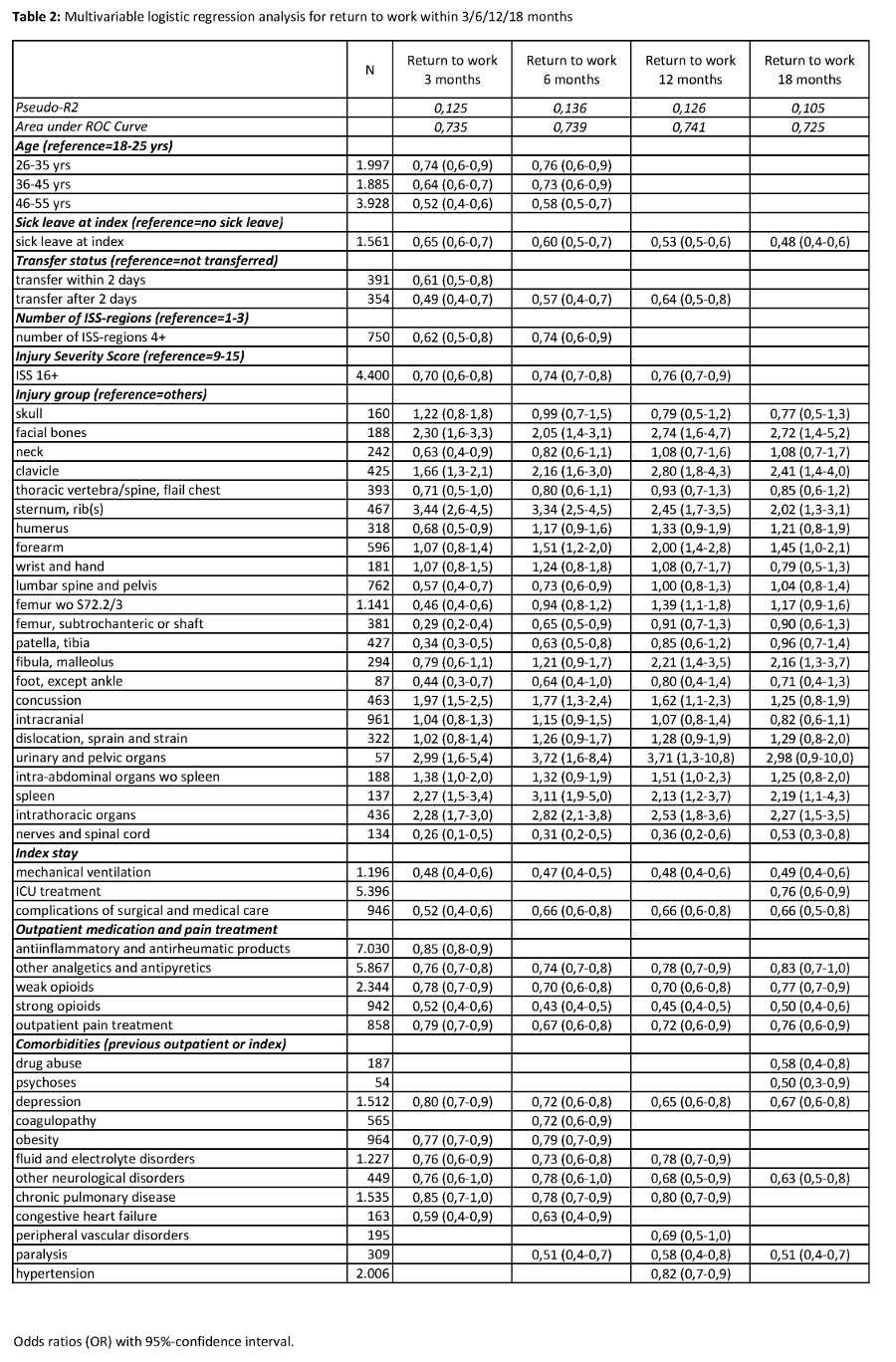German Congress of Orthopaedics and Traumatology (DKOU 2025)
Deutscher Kongress für Orthopädie und Unfallchirurgie 2025 (DKOU 2025)
Return to work after major trauma – a German population-based health claims study on 9,423 patients
2Department for Trauma Surgery and Orthopaedics, Reconstructive and Hand Surgery, Burn Medicine, Germany Armed Forces Central Hospital Koblenz, Koblenz, Deutschland
3Department of Orthopaedics and Traumatology, University Hospital and Medical Faculty Düsseldorf, Düsseldorf, Deutschland
4Institute for Research in Operative Medicine, Witten/Herdecke University, Cologne, Deutschland
5AUC-Academy for Trauma Surgery, Munich, Deutschland
6Department of Trauma, Hand, and Reconstructive Surgery, University Hospital Essen, Essen, Deutschland
Text
Objectives and questions: In Germany, around 30,000 people suffer a severe trauma each year.60 percent of which are of working age (18 – 65 years). Return to work (RTW) is a one main aim of trauma care, thus strengthening patients’ social participation and reducing the economic costs of absenteeism. However, data on the adverse change in employment status after major trauma is scarce. Our objectives were therefore (1) to assess the prevalence of RTW up to 18 months after hospitalization for severe trauma, (2) to quantify the duration of sick leave, and (3) to identify predictors of RTW. The LeAf Trauma-study is funded by the German Innovations Fund (01VSF21033).
Material and methods: This population-based cohort study uses nationwide health claims data of the AOK, covering 37% of the German population with statutory health insurance. AOK claims data contain de-identified information on patient demographics, working status, hospitalizations, outpatient visits, outpatient drug prescriptions, rehabilitation, and sick leave days. The study included 9,423 AOK-insured employees aged 18 – 55 with a hospital admission for major trauma (ISS≥9) from January 2015 – December 2017 and at least 42 days of sick leave after admission. We examined RTW within 3, 6, 12 and 18 months after admission. RTW was defined as being employed without any sick leave for at least 5 days. In patients with RTW, we determined the duration of sick leave and report unadjusted incidence rate ratios (IRR). Predictors of RTW were assessed using multivariable regression for each time point.
Results: The rate of RTW was 35%, 67%, 82% and 88% after 3/6/12/18 months, respectively (Table 1 [Tab. 1]). Rates differed substantially by age (Figure 1 [Fig. 1]) and injury group being lowest in spinal cord-injured patients and highest in patients with injuries of urinary and other pelvic organs (9%–59% after 3 months). These had the highest/lowest number of sick leave days (275d/98d) and IRRs (1,92/0,68), respectively. Furthermore, in all four multivariable models, ventilation and complications during the index stay as well as pre-existing depression, neurological disease or sick leave were associated with lower RTW rates (Table 2 [Tab. 2]).
Discussion and conclusions: RTW increased with time after major trauma demonstrating the potential for long-term improvement. Besides the type of injury, age and comorbidities have a serious impact on the likelihood of RTW. The findings highlight the need for longer follow-up of patients to fully quantify the burden of major trauma.







